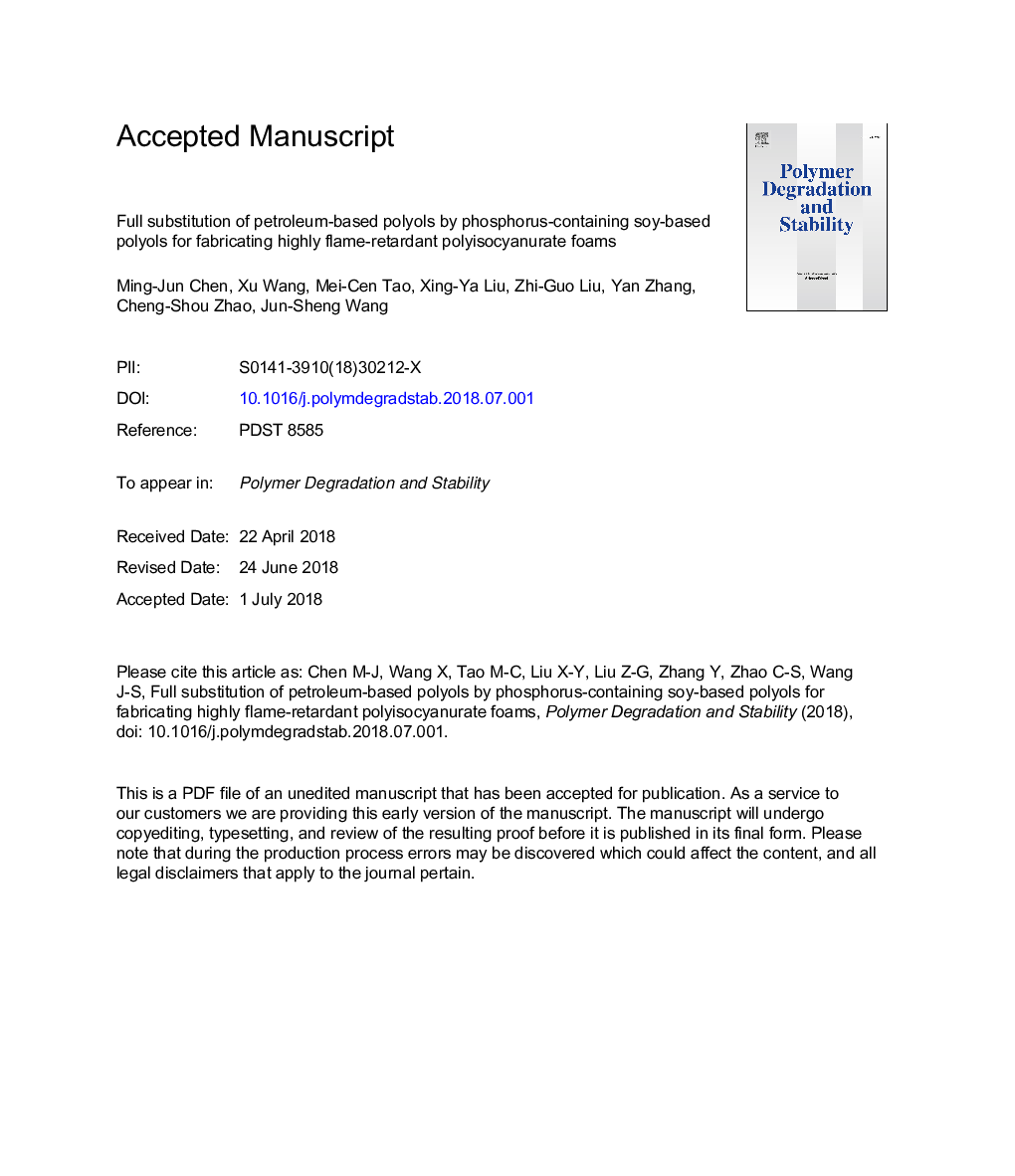| Article ID | Journal | Published Year | Pages | File Type |
|---|---|---|---|---|
| 7823957 | Polymer Degradation and Stability | 2018 | 47 Pages |
Abstract
To obtain a substitute for petroleum-based polyols and simultaneously solve the flammability problem of polyisocyanurate (PIR) foams, a novel phosphorus-containing soy-based polyol (PCSO) was firstly synthesized. Then, PCSO was used to fabricate biomass flame-retardant PIR foam (P-PIR) by fully replacing petroleum-based polyol. The morphology, compressive strength, thermal conductivity, thermal stability, flammability, and flame-retardant mechanism were studied for the developed PIR. The incorporation of PCSO results in a slight decrease in the compressive strength and an increase in the flame retardancy of PIR foam. To further improve the flame retardancy, a commercial phosphorus-containing polyol (BY30) and an expandable graphite (EG) were added in the P-PIR system. The test results show that the decompositon of PIR was hindered after 330â¯Â°C and the char residue was significantly improved. In addtion, the limiting oxygen index of PIR was significantly increased to 35%, and the peak of heat release rate and total heat release were dramatically decreased by 65% and 87%, respectively. A synergistic flame-retardant effect was achieved by combining the gas phase action of PCSO and BY30 with the condensed phase action of EG.
Related Topics
Physical Sciences and Engineering
Chemistry
Organic Chemistry
Authors
Ming-Jun Chen, Xu Wang, Mei-Cen Tao, Xing-Ya Liu, Zhi-Guo Liu, Yan Zhang, Cheng-Shou Zhao, Jun-Sheng Wang,
